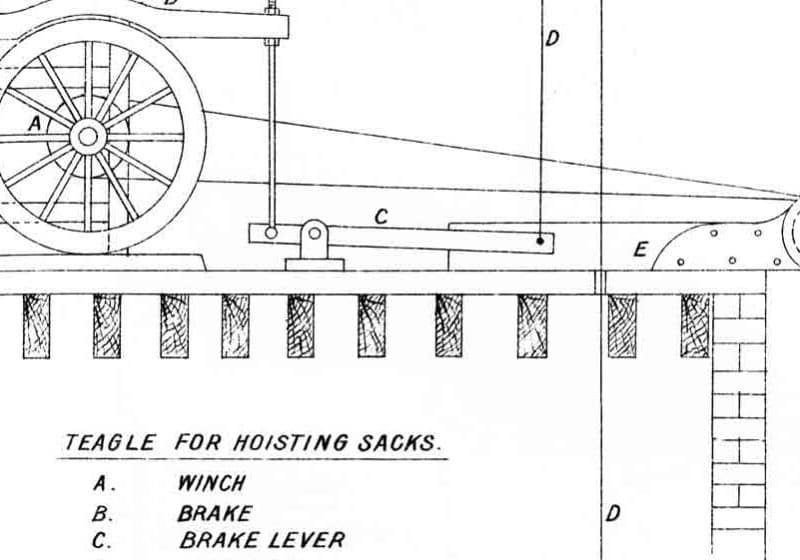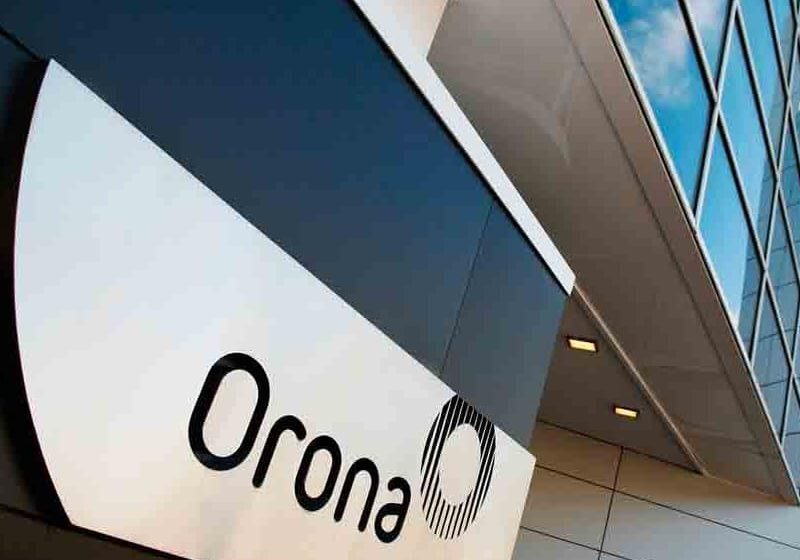Japan in the Aftermath: How the Industry Handled “The Great Quake” – The State of Elevator and Escalator Restoration
Oct 1, 2011

The first official report since the March 11 earthquake and tsunami in Japan sheds light on the work ahead for the country.
by JEA Secretariat and Editorial Committee
translated by Masaru Matsumoto, EW Correspondent
In July, Elevator Kai, the Japanese Elevator Associ-ation’s (JEA) quarterly magazine, published a report titled “Elevators and Escalators Restoration State in the Aftermath of the 3.11 Tohoku Earthquake and Tsunami.” This first official JEA report since the March 11 earthquake and tsunami will hope-fully shed light on the work ahead for the country and its people. We plan to follow this report with Elevator Kai’s next general update on the industry, which is scheduled to appear in that magazine’s October issue. . . . Editor
We extend our sincerest condolences and deepest sympathies to the disaster victims and their families who were sacrificed and injured in the Tohoku earthquake and tsunami, or “The Great East Japan Earthquake.” Further-more, we pray for all the victims to regain their peaceful life without delay. Immediately after the disaster, we got in touch with all the member companies and asked them to take appropriate actions for the recovery. We would like to present a brief report on the outline of the earthquake and requirements given to our member companies.
Outline of the Earthquake
The earthquake struck at 2:46 p.m. JST on Friday, March 11, with the epicenter approximately 70 km east of the Oshika Peninsula of Tohoku in northeast Japan and the hypocenter at an underwater depth of about 32 km. Its 9.0-magnitude on the Richter scale made it the most powerful earthquake known to have hit Japan and one of the five most powerful earthquakes in the world overall since the modern recordkeeping system began in 1900.
This earthquake occurred where the Pacific plate lies under the plate beneath northern Honshu (the main island of Japan). The break caused the seafloor to rise by several meters. According to the Japan Meteorological Agency, this earthquake may have ruptured the fault zone from Iwate Prefecture to Ibaraki Prefecture, with a length of 500 km and width of 200 km, and its shift of the fault may have run 20-30 m at maximum.
On that day, almost everyone living in northeast Japan, including Tokyoites 400 km away from the epicenter, must have felt the shock of the earthquake as it endured for 120-180 s. Kurihara in Miyagi Prefecture is the nearest city to the epicenter, registering an intensity of level 7 on the Japanese scale. In other quake-hit areas, Iwate, Fukushima, Tochigi and Ibaraki prefectures, the upper sec-tion of level 6 had been measured. We have experienced more than 900 aftershocks since the Tohoku Earthquake, with 60 registered over a 6.0 magnitude and at least three over a 7.0 magnitude.
Damage Situation
The earthquake, which was caused by a 5-8 m upthrust on a 200-km-wide seabed 70 km offshore from the east coast of Tohoku, resulted in a major tsunami that brought destruction along the Pacific coastline of Japan’s northern islands. Thousands of lives were lost, and entire towns and fishing villages along the coastline were devastated. Casualties
As of July 31, the Japan National Police Agency (NPA) had confirmed 15,650 deaths, 5,699 injured and 4,977 missing across 18 prefectures. Of the 13,135 fatalities re-covered by April 11, 12,143 (92.5%) died by drowning. Victims aged 60 or older accounted for 65% of the deaths, with 24% of total victims being in their 70s. As many as 100,000 children were uprooted from their homes, some of whom were separated from their families because the earthquake occurred during the school day.
Tsunami
Initial estimates indicated that the tsunami would take 10 to 30 min. to reach the areas first affected, then areas farther north and south based on the geography of the coastline. Just over an hour after the earthquake initially struck, a tsunami was observed flooding Sendai Airport, which is located near the coast of Miyagi. The waves swept cars, planes, houses, fields, roads and other buildings.
According to the information published by the Japan Meteorological Agency and Port and Airport Research In-stitute, observed tsunami heights at the port sites were over 8.5 m at the port of Miyako; over 8 m at the port of Ofunato; over 7.6 m at Ayukawa, Ishinomaki; and approximately 12 m at Sendai Airport. The surface area wetted by the tsunami ranged over 561 km2 in the disaster-affected areas.
A joint research team from Yokohama National Uni-versity and the University of Tokyo reported that the tsunami at Ryori Bay, Ofunato, was about 30 m high. At Taro, Iwate, a University of Tokyo researcher reported that an estimated tsunami height of 37.9 m reached the slope of a mountain some 200 m away from the coastline. At the slope of a nearby mountain 400 m from Aneyoshi fishery port of Omoe peninsula in Miyako, Iwate, the team found that the tsunami’s height reached around 38.9 m. This height is deemed the record in Japan, exceeding the 38.2-m height of the 1896 Meiji-Sanriku earthquake.
Destroyed Buildings, Automobiles and Ports
On April 3, the NPA said that 45,700 buildings had been destroyed, and 144,300 had been damaged by the earth-quake and tsunami. The damaged buildings included 29,500 structures in Miyagi, 12,500 in Iwate and 2,400 in Fukushima. Three hundred hospitals with 20 beds or more in Tohoku were damaged by the disaster. The earth-quake and tsunami created an estimated 24-25 million tons of rubble and debris countrywide.
An estimated 230,000 automobiles and trucks were damaged, destroyed or washed away in the disaster. As of the end of May, residents of Iwate, Miyagi and Fukushima had requested deregistration of 15,000 vehicles, meaning that the owners of those vehicles had written them off as un-repairable and unsalvageable.
All of Japan’s ports briefly closed after the earthquake, though the ones in Tokyo and southward soon reopened. Fifteen ports were located in the disaster zone. The north-eastern ports of Hachinohe, Sendai, Ishinomaki and Onahama were destroyed, while Chiba port and Japan’s ninth largest container port at Kashima, Ibaraki, were also affected, though less severely. The ports at Hitachi-naka, Hitachi, Soma, Shiogama, Kesennuma, Ofunato, Kamaishi and Miyako were also damaged and closed to ships.
Accidents at the Nuclear Power Plants
Fukushima Dai-ni (No.2), Onagawa Nu-clear Power Plant and Tokai Nuclear Power Stations, consisting of a total 11 reactors, were automatically shut down following the earthquakes. Cool-ing is needed to remove decay heat after a reactor has been shut down, and maintain spent fuel pools. The backup cooling process is powered by emergency diesel generators at the plants. Unfortunately, at both power plants, the tsunami waves topped sea-walls and totally destroyed these diesel backup power systems, leading to severe problems at Fukushima,includingthree large explosions and radioactive leakage.
Shortages of Electricity, Oil, Gas and Water
According to Tohoku Electric Power Co. Inc. (TEP), around 44 million households in northeastern Japan were left without electricity. Several power plants (both nu-clear and conventional) went offline after the earthquake, reducing Tokyo Electric Power Co. Inc’s total capacity by 21 GW. Therefore, rolling blackouts began on March 14 due to power shortages caused by the earthquake. They lasted three hours a day in Tokyo, Eastern Shizuoka, Ya-manashi, Chiba, Saitama, Tochigi and Gunma prefectures.
Cosmo Oil Co., a 220,000-barrel-per-day oil refinery at Ichihara, Chiba Prefecture (east of Tokyo), was set on fire by the earthquake. In Sendai, Miyagi, a 145,000-barrel-per-day refinery owned by JX Nippon Oil & Energy was also set ablaze by the quake. The tsunami resulted in more than 300,000 refugees in the Tohoku region and shortages of electricity, oil, gas, water, food, shelter, medi-cineand fuel for survivors.
Damage Investigation of Elevators and Escalators
The damage investigation into the elevators and esca-lators affected by the earthquake is still being conducted by JEA member companies. Due to the devastated area being widespread and off limits in some places, it will take a little more time to wrap up the investigation. For this reason, we are going to report the result of the search in the next issue of Elevator Kaiin October.
Earthquake Comparison among Past Records
In comparison with the past seismological data both in Japan and throughout the world since 1900, the earth-quake can be said to have been unprecedented. As shown in Tables 1 and 2, the Tohoku Earthquake was the largest by magnitude in Japan and the fourth largest in the world.
The Outline of Emergency Measures Taken by JEA
With the viewpoint of human life, JEA issued an urgent notification to our affiliates and member companies throughout Japan in order to make an emergency response to the earthquake. According to the results of a survey on the passengers entrapped in the areas of Miyagi (hit with a force of seven on the Japanese intensity scale) and 22 prefectures (including Tokyo Metropolitan area, in which over four on the Japanese scale was measured), there were 257 cases. No accident causing injury or death related to entrapment was reported. Of course, we admit this figure is less than perfect, due to heavy time pressure, the expanse of the devastated areas and off-limit areas.
JEA has extended a helping hand to its member companies to more easily get permission from the government to pass through the restricted traffic and enter the restricted areas hit by the earthquake. In this way, JEA distributed step-by-step instructions on how to get such required documents. These helped quickly dispatch necessary engineers and appropriate replacement components and parts for elevator and escalator restoration.
In order to support the member companies in the confusion caused by the rolling blackouts, JEA explained vertical-transportation startup and how to prevent passenger entrapment to the building owners and administrators of elevators and escalators.
The result shows that there were 654 total entrapments, covering the Kanto district (including Tokyo) and eight other prefectures. These data were gathered over two weeks, from March 15 (when the rolling blackouts began) to March 28 (when they ended). This figure far exceeds the previous one of 257. Accordingly, JEA is concerned of the chance that such rolling blackouts are carried out sequentially.
At JEA’s request (so its member companies could focus on elevator and escalator recovery work), the Tokyo Metropolitan Government allowed postponement of the presentation time limit of the Periodic Inspection and Operation Suspension Report. JEA then further requested that specific local ad-ministrative offices throughout the country accept the said postponement by way of our local block committees. Member companies were given the following requirements:
- Rescue trapped passengers, if any, immediately, and speed up the recovery work. This specifically includes passengers trapped due to rolling blackouts.
- Restore damaged equipment, if any, to normal function.
- Report the details to JEA. Conclusion
The number of aftershocks were fewer as time passed after the initial shock. However, the Japan Meteorological Agency has called for the nation’s attention to the out-break of aftershocks having about a magnitude 8 on the Richter scale. As of this writing, we have recently experi-enced earthquakes with 6 to 7 magnitudes. Meanwhile, local governments have been building temporary hous-ing, and some of the evacuees have started to move into the new structures. JEA would like to support Japan’s government in carrying out quick, impactful reconstruc-tion programs for the areas hit by the Tohoku Earthquake and Tsunami under the government initiative with a viewpoint of assistance of disaster victims.
Reprinted from Elevator Kai
Get more of Elevator World. Sign up for our free e-newsletter.








